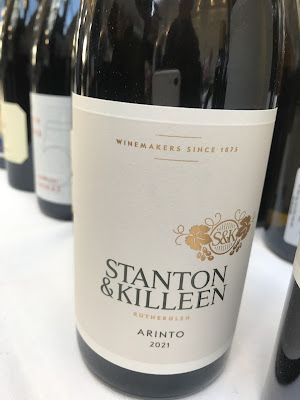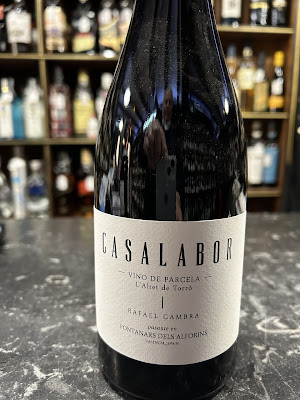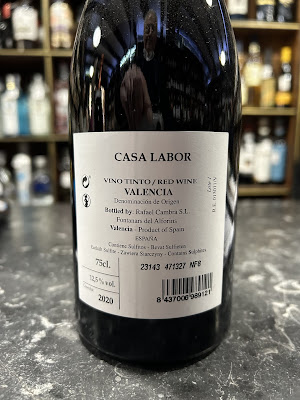Valencia is Spain's third largest city and largest port. In the 1950s a disastrous flood of the river Turia in 1957 (the 75th since the 14th Century),with more than 80 dead and many buildings destroyed resulted its diversion, leaving the massive river bed that extended through the city dry, Decades later the authorities spent 1.3 billion Euros on creating attractions along a huge stretch to bring tourists to Valencia in the way the Ghery/Guggenheim has to Bilbao.
Santiago Calatrava designed the Museu de les Ciencias Principe Felipe (1998), the Agora which is used for sports and other activities and the Hemisferic exhibition centre (2002). One of the world's largest aquariums, the Oceanografic (2003) designed by Felix Candela fits into that complex. There are also beautiful gardens to walk along.
 |
| Valencia Opera House |
The Opera House (Palacio de las Artes Reina Sofia) was clearly designed, built and dropped in by friendly Martians to complete the complex (2005). The whole development has succeeded sensationally bring hundreds of thousands of visitors to the city every year including us.
A good thing too as Valencia is very well worth visiting with a wonderful historic centre, excellent beaches, amazing market, galleries and interesting restaurants. It is after all the birthplace of Paella.
The wines of Valencia province are overlooked but as usual in these situations, unjustly. If you order a house wine in a restaurant it is as likely to be a Malvasia or a Semillon as a Rueda/Verdejo. Monastrell (Mourverdre) prevents Tempranillo having a monopoly of the reds.
Valencia's best wine shop is the venerable Baviera. They know their stuff there but in reply to the question of wine made from a rare grape variety we were shown two bottles of red. One was named with a synonym for Trepat we discovered after a bit of frantic googling but the other appeared to be a genuine rarity, Miguel de Arcos is the name of the grape.
Later it appeared this may be none other than Moristel but we like Moristel in any case so might have bought it anyway.
As we have often remarked, the Spaniards keep their treasures well concealed so if this is not Moristel it will have been a real find.
We found these entries on Miguel de Arco. There are none in 'Wine Grapes either under that name or under Moristel. Galet has an entry on Miguel de Arcos with no mention of Moristel. He mentions a grape called Arcas but that comes from Romania.
Wine Australia:
Miguel de Arco is a medium ripening black grape from Spain. It has a medium growing season with low yield potential. Vitis vinifera, the selected clone for data analysis was Miguel de Arco ex VRS Rutherglen. The prime name of this variety is Cadrete.
Wein Plus Lexikon:
The red grape variety (also Miguel de Arco de Aragon) originates from Spain. The parentage is unknown. It must not be confused with the Cadrete variety (with synonym Miguel de Arco). The variety is mainly cultivated in the region of Aragon In 2010, 468 hectares were recorded, but there was no more stock in 2016 (Kym Anderson).
Wikipedia:
Moristel is also known as Concejón, Juán Ibáñez, Miguel de Arcos and Miguel del Arco (or Miguel d'Arco).
 |
| Typical view of vineyards with olive trees from the train between Valencia and Cordoba |
Next to Malaga via Codoba. We had time to stop over and visit the Mezquita (Mosque) with the church inside and the little Synagogue past the statue of Maimonides round the corner. We also had a fine lunch in one of the restaurants alongside the Mezquita with a delicious glass of a local white wine which could have been Pedro Ximenez, Layrén (Airen), Baladí (!) Moscatel or Torrontés but wasn't. Cordoba is part of the Montilla Morales appellation. We once has a terrific Montillo Morales Sherry which has put Montillo Morales in our good books ever since. As soon as we remember the grape of that delicious wine we drank at lunch we'll be sure to let you know. Meanwhile, you could drink lots of M.M wines yourselves to test our theory.

Food in Spain can be wonderful although on this trip we were appalled to find Russian Salad of all things on many menus. We wondered what was going on so actually ordered a portion. It was basically mayonnaise in huge quantities with bits of potato in it and not much else as far as we could see. None of the peas and bits of carrot which solicit the question 'Are you about to eat that or have you just eaten it?'
Having flown into Malaga countless times en route to places down the Costa del Sol towards Marbella we had practically never set foot inside the city apart from a couple of pilgrimages to the Museu del Vino reported a long time ago in these pages.
Malaga has had a renaissance as well as Valencia. No interplanetary assistance was needed - just converting the historic centre into a pedestrianised zone. It's amazing how that alone seems to have transformed it.
Wine-wise we are in PX and Moscatel - land. Even the dry wines are made with sweet grapes. At the Antigua Casa de Guardia, the oldest Bodega in Malaga, we entered another universe.
It was thronged with people and had something of the atmosphere of a den of iniquity. Unbelievable that after so many visits to Andalucia we hadn't come across this joint before.
Founded in 1840 the Antica Casa has a greater quantity of Solera barrels than anywhere else in the city.
 |
| Pajarete Solera 1908 |
Malaga’s wines were at their greatest then: there were about 112,000 hectares
of vineyards and the wines were exported halfway around the world from
the port of Malaga. It was even the usual drink among nobs and gentry including the first presidents of the United States apparently. Phylloxera ruined all that but if the scene at the Antigua Casa de Guardia was anything to go by, there may be a revival afoot.
The wines included
Pajarete 1908Málaga GarijoPedro Ximén 1908Verdiales con arteVerdiales CreamVerdiales SecoIsabel IIMoscatel GuardiaEl ChaveaMoscatel GuindaVermut ClásicoVermut Especial We didn't try all of these of course. Verdiales we gather means young wine. Parajete is the term for a sweet wine which has been bolstered by some of it being concentrated by boiling and then added back to the base wine. It is a historical beverage and we were keen to try it.
Pajarete or Paxarette was popular as a straight dessert wine in England in the 18th century. It gets its name from a monastery and vineyards near Arcos de la Frontera in the province of Cadiz. It is made generally with Pedro Ximenez or Moscahel de Alejandria. The essence referred to above is produced by boiling the must down to a third or a fifth. It certainly was sweet and in a good way.
The Verdiales Seco was a very pleasant dry version of Pedro Ximenez such as is to be found quite often these days,
An amusing idiosyncrasy was the use of chalk on the bar to tot up the bill for the numerous shots the customer had drunk.
Over to the Museu del Vino, still going - perhaps strong in the tourist season but not so much that February day.
We were offered a free tasting of this gorgeous Malaga Dulce. That reminded us that neither this nor any of the wines at the Antigua Casa de Guardia were fortified.
By great fortune, the shop at the Museu was still selling Bodega Schatz's Rosado made from Moscatel Negro. This is positively our favourite rose wine in all the world. Or at least one of them.
Malaga is also home to the Picasso Museum and the house where he was born and where he lived up to the age of 8. Don't miss the birth house! It packs an emotional punch that will remain with you;
'The models my father hired for me were my reward. After that I made my whole family pose for me. Then my father handed over to me his brushes an palette. At the time I didn't understand why. I was too young... but it made me very happy. It was not until much later that I came to understand the full significance of his gesture,'
'My mother said to me, "If you are a soldier, you will be a general. If you are a monk, you will become the Pope." Instead, I was a painter, and I became Picasso.'
At another museum, the Museo Carmen Thyssen, a wonderful discovery from Zurbaran;
 |
| St. Marina, patron saint of the kidneys. |


















































